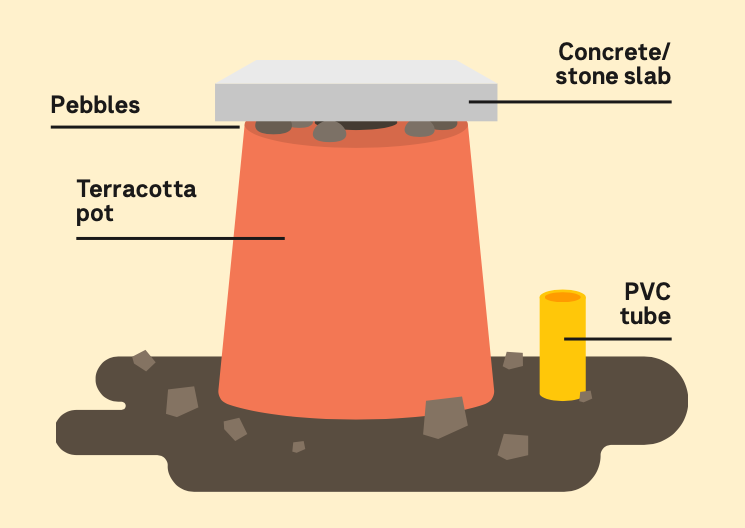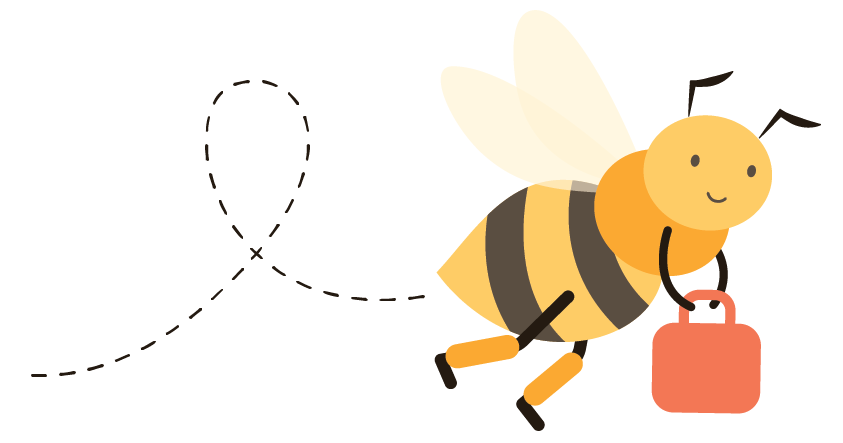Why do bees matter to our environment?

Bees are a critical part of our food chain as they help to pollinate most of the crops we eat, and many that feed farm livestock.
Two-thirds of Australia's agricultural production benefits from bee pollination. Pollinators are in decline worldwide because they've been affected by diseases, habitat loss, widespread use of chemicals in agriculture, and climate change.
While European honey bees have been domesticated for their honey production, native Australian bees play a vital role in pollinating native plants, many of which can't be pollinated by introduced bees. Australian native bees are crucial in maintaining biodiversity and ecosystem health within our cities and broader landscape.
Australia has more than 1650 native bee species which are represented by 10 groups. Seven of these groups are frequently found across Victoria. These include Reed Bees, Blue Banded Bees, Teddy Bear Bees, Leafcutter Bees, Resin Bees, Homalictus Bees and Masked Bees.
What is a bee hotel?
A bee hotel is a small structure designed to attract native solitary bees. They provide long-term accommodation where a bee can nest, rest and breed.
Unlike European honey bees which live in hives only, native bees find shelter in small underground burrows, cracks in the ground, tree hollows, and other natural hideouts.
Bee hotels simulate these habitats and provide a safe home from harsh weather conditions, especially in winter when native bees are still active.
Materials
Tools:
- terracotta pot 25x22cm
- gauge wire
- PVC tube
- concrete/stone slab
- pebbles
- sign post with poster
- wheelbarrow.
Digging apparatus:
- large shovel
- pruner
- knife/screw
- gloves
- hand shovel.
Insulation material:
- soils
- twigs
- leaves
- pithy plants
- plant fibre
- bamboo hollows
- coconut fibre or bird nesting material.

Instructions
Bee hotels are built on clay or brown soils with native plants, acidic trees and wild flowers around.
The location should have good natural drainage and ideally be facing a sunny northeast direction for maximum sunlight which enables pollen production in plants.
The foundation of the bee hotel is built from a terracotta pot. If multiple hotels are being built, consider including different internal designs to encourage various native bee species. You may choose to use short lengths of tiny hollow bamboo, faux bird or coconut nesting material, leaves, soil or twigs. Different designs will attract a particular species to the hotel, providing them a place to nest, rest and breed.
How to build a bee hotel in 10 easy steps!
Dig a hole in the ground large enough to fit the circumference of the terracotta pot using a large shovel and hand shovel to carve out the shape of the hole.
Cut some gauge wire using a pruner, big enough to cover the pot's circumference, and an extra 5 cm to secure the wire to the outside of the pot once turned upside down. Make sure to fit the wire to the pot for size before adding insulation material.

Each terracotta pot will contain different insulation materials to encourage different species of native bees. The insulation materials are added together with coconut nesting material or bird nest material.
- Leaf cutter bees = leaves and pithy plants
- Teddy bear bees = clay soils
- Reed Bees = pithy stems and twig hollows
- Blue-banded bees = sandy clay soil/ mud
- Resin bees = twigs, leaves and organic matter
- Homalictus bees = sandy clay soil, leaves and plant fibre
- Masked Bees = bamboo hollows and pithy stems.
Position the insulation material into the gauge wire (most of the pot will contain different materials as specified in the above bee preferences).
Pierce 3-4 holes on one side of the PVC tube using a screw or knife. The holes will allow drainage if water enters the tube, preventing the bees from drowning. Ensure the holes are facing towards the ground. Put the PVC tubing through the middle of the gauge wire and insulation material.
Attach the gauge wire, PVC tube and insulation material to the terracotta pot.
Flip the pot upside down, holding it from both sides so the insulation material and gauge wire do not fall out.
Position the pot over the hole. You can fix it in place with soil dug out of the ground to make the hole. Ensure the PVC tube has an entry/exit point coming out of the ground and is not covered in soil.
Add 3-5 pebbles to the roof of the terracotta pot (the pot will have a hole on top), then place a stone or concrete slab on top of the pebbles. This technique allows for ventilation in the hotel and protects the bees from rain and challenging weather conditions.
Give your hotel an identity! Put up a poster or sign beside your bee hotel.